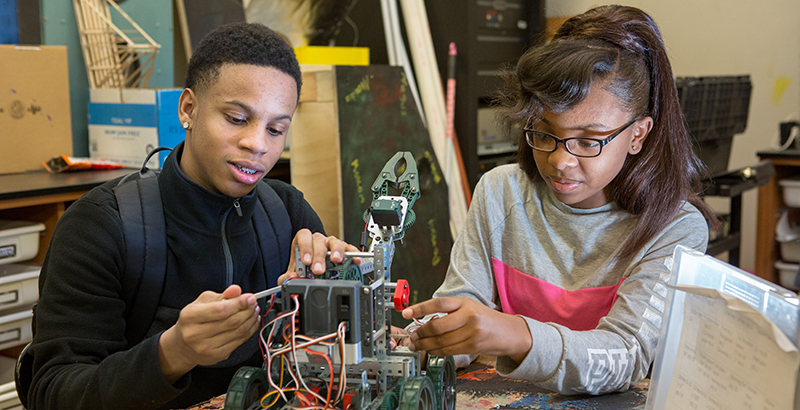Steele: Surveys Show Generation Z Seeks Different Education Paths. It’s Time We Showed Them All Their Options

Generation Z has long been recognized as a peer group focused on change and advocacy. These digital natives appreciate the ability to support mission-driven causes, are entrepreneurial in nature and understand that their career path will undoubtedly differ from that of those who came before them. This mentality holds true when it comes to education; today’s high school students have a desire to explore multiple paths to success, blaze their own trail in postsecondary education and potentially take a path that differs from their parents’.
This mindset was validated in two recent surveys by ECMC Group in partnership with Vice Media designed to gather insights from the next generation of postsecondary students and workers. The surveys of 2,200 high schoolers ages 14 to 18 were conducted slightly before the pandemic and a few months after the vast majority of schools transitioned to online learning. Surprisingly, as the world made a seismic shift, the thoughts of this demographic remained much the same, and these students’ desire to blaze their own trail endured.
The takeaway: High schoolers are interested in determining their own path after graduation, and it’s up to educators to provide on-ramps that enable them to reach their educational and professional goals in their own way.
To do so, we must understand the teen mindset when it comes to learning. The surveys found that nearly three-quarters of teens believe a skills-based education makes sense in today’s world, and that learning hands-on or on the job is the most effective way to gain skills. They also highlighted that teens have a keen understanding of the connection between mastering skills and securing a job.
The best way to meet their needs is by providing education focused on specific job skills, taking into consideration those required by the workforce; in essence, a greater emphasis on a bottom-up approach to education rather than traditional top-down tactics. Today’s world of innovation requires offering instructional methods that cater to the incoming generation’s way of thinking, lifestyle and use of technology. For example, organizations including mine have begun integrating virtual reality into curricula, enabling students to learn hands-on skills in a controlled setting where they can practice as many times as they need before they enter a professional environment.
Perhaps not surprising, the surveys found that the cost of college is a top concern. Sixty-four percent of teens worry about how they’ll pay for higher education, and when making decisions about postsecondary education, 74 percent say more specifically that the amount of debt they’d need to take on impacts their decision. In addition, 56 percent expect the government to provide additional money to help pay off loans, and 46 percent expect companies to provide formal education that upgrades work-relevant skills.
We also found that Gen Z values passion over profits. A majority of teens surveyed say success will be defined by focusing on what they love, regardless of how much money they make.
It’s clear that these learners seek an education that offers innovative learning methods and a system that supports educational achievement. But the data also show that they lack an awareness of the variety of postsecondary paths beyond a traditional four-year education. This illustrates the need for educators, parents, counselors and even employers to help them understand that there is more than one way to achieve their educational and professional goals.
The coronavirus has brought widespread disruption to education. From reconfigured classrooms to innovations in online learning — some more effective than others — educators have an opportunity to evolve their methods to provide exposure to pathways that are technology-enabled, career-focused, less expensive, shorter in duration and skills-based. This forward-thinking mindset lends itself to a more flexible education with actively involved employers and stakeholders.
By connecting the dots between the desires of Gen Z teens and the postsecondary opportunities that a technical, skills-based education provides, we can open the door to quicker access to the workforce with less debt. As we look to the future, we need to think about how the workforce will gain new skills and become employed in an economy that has experienced, and continues to experience, uncertainty. And we must embrace the fact that there are many pathways to a career.
Todd Steele is president of ECMC Education, a nonprofit provider of career and technical education.
Get stories like these delivered straight to your inbox. Sign up for The 74 Newsletter

;)